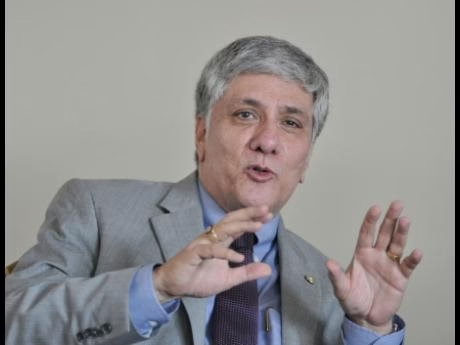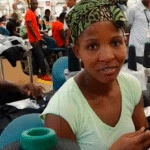Haitians should not expect the first contingents of the Gang Suppression Force to deploy “in the coming months,” according to former U.S. chargé d’affaires in Haiti Luis Moreno.
Moreno told CTN in an exclusive interview with Emmanuel Paul that it will take “at least six months” before Haitians begin to see the first troops on the ground.
The retired diplomat lamented that “no country has made a formal commitment” to contribute forces.
In the interview, Moreno offered a blunt assessment: the political green light secured in New York is not enough to turn a resolution into boots on the ground in a matter of weeks.
“The UN bureaucracy moved relatively quickly to pass this and get the Russians and Chinese to kind of stay out of it. However, the question of getting countries to commit personnel and troops has always been one of the major problems since the main UN mission was withdrawn a few years ago. That’s always been a major problem,” he said.
At the heart of the delay, he argued, is the gap between public pledges and concrete, deployable units—namely, those that are named, resourced, trained, and ready to move. “The Jamaicans said last time that they were going to help with this CARICOM initiative and put people there, and the Jamaicans only put 20 or 30 people in,” he noted. “And believe me, having been the U.S. ambassador to Jamaica, I know that the Jamaica Defense Forces are extremely professional, extremely competent, extremely well trained, and also used—they have a lot of experience at fighting against gangs. But if they’re only going to put 20, 30 people on the ground, that’s not going to do it.”
He said other countries have been discussed in preparatory talks, but without firm pledges. “They’re talking about even the Panamanians putting people on. But no one has signed on the bottom line and said, ‘Yes, I’m sending 500. Yes, I’m sending 400.’ No one has done that yet except the Kenyans,” he said. Even then, he cautioned, the planned scale requires a critical mass: “This thing is supposed to be for 5,000 troops, right? I don’t think the Kenyans will send 5,000 troops. The Kenyans had their own domestic political problems with all this.”
For that reason, Moreno said the realistic timeline must be counted in months, not weeks, given the sequence of government decisions, formal sign-offs, training, equipping, and pre-deployment. “So, you ask me—it’s not going to be weeks or months. I think it will take at least six months. At least six months are required because the countries have to agree, they have to sign, those personnel have to be trained, they have to get ready, they have to be deployed, and they have to be equipped. That doesn’t take weeks; that takes months and months.”
He expressed skepticism about ambitious target dates being circulated by some backers of the initiative. “That’s why the date that [Mr.] Saint-Cyr and others have for April of 2026—I just don’t see that happen. And it pains me to say that, but I just don’t see how it can be,” he said.
Beyond logistics, Moreno warned against a “symbolic presence” that would fail to shift the balance against well-armed, mobile criminal groups. A deployment that is too small or too late, he suggested, would undermine the mission’s credibility without yielding tangible security gains for Haitians.
His comments highlighted several often-overlooked determinants: joint operational planning, clear rules of engagement, integration with the Haitian National Police and administrative policing, and the sustainment chain—encompassing medical support, mobility, resupply, and maintenance. In past missions, he noted, those elements took months to reach basic effectiveness.
The fight against gangs, he stressed, demands specialized skills and institutional endurance—hence the need for contributors with proven urban experience and a clear mandate. Returning to the Jamaican example, he said the JDF “have a lot of experience” in anti-gang operations but reiterated that “if they’re only going to put 20 or 30 people on the ground, that’s not going to do it.”
Moreno also cautioned against making headline pledges that are not backed by detailed force packages, as this can erode international consensus and raise false hopes. What’s needed now, he said, is a concrete contributions table—units, numbers, equipment, timeline, and assigned tasks—rather than generalized assurances. He warned against the recurring temptation of the coalition to shift most of the burden onto a single lead nation: “I don’t think the Kenyans are going to send 5,000 troops,” he repeated, citing domestic political constraints in Nairobi.
Asked by CTN what message he had for Haitians, Moreno urged candor and persistence: be honest about timelines, set concrete milestones, and explain the sequence—selection, training, pre-positioning, and deployment—aligning it with sustained support for the Haitian National Police and civilian stabilization efforts. Otherwise, he warned, there is a dual risk: a slipping calendar and criminal groups entrenching their positions in the meantime.
Ultimately, he said, success will depend not only on the headline number of soldiers but on the quality of coordination and the durability of commitments. “The countries have to agree, they have to sign; those people have to be trained, they have to get ready, they have to deploy, they have to be equipped,” he said, underscoring that every link in the chain matters. For now, he concluded, “no one has signed on the bottom line” for significant troop numbers—“except the Kenyans”—which underpins his forecast: no rapid shift on the ground, and “at least six months” before any visible effects.








